A guide to composting: the fundamentals
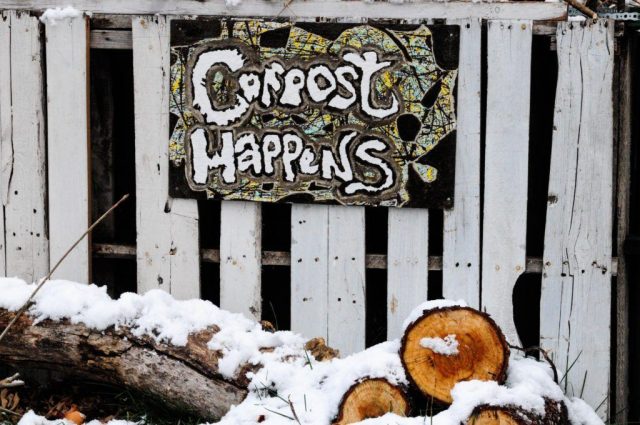
We share the first part of Ethical.net’s guide to composting, covering the fundamental principles of turning your food waste into a wonderful soil fertiliser.
Composting is an essential natural process, without which we wouldn’t be able to grow our food. Composting is about accelerating nature’s cycles, and one of the key ways is to recycle at home, allowing us to lessen our impact on the environment by reducing or even eliminating personal food waste. It is also a wonderful way to make use of the natural resources at our disposal.
Why composting is a good idea
Composting at home is a great idea because it:
- Reduces food waste and organic waste from our gardens
- Provides us with our own source of fertile compost
- Makes it easier to grow our own food, to protect the soil, and to live a more eco-friendly way of life
The Waste and Resources Action Programme (WRAP) estimates that UK food waste is associated with greenhouse gas emissions of over 20 million tonnes, with approximately three-quarters of those arising in the UK.
In 2017, government statistics showed that 7.4 million tonnes of biodegradable municipal waste was sent to UK landfill. This is just 21% of the total from 1995 – yet though this shows significant improvements with food waste and other biodegradable waste, there is still a long way to go.
The amount of food waste sent for composting (including anaerobic digestion) increased by 8.7 percent in 2017 (up to 386,000 tonnes from 355,000 in 2016), but remains a very small proportion of total waste collected (2 percent).
Home composting can play an important role in lessening the strain on municipal waste management. Not only will it significantly reduce the food waste and other organic waste we generate, it can also reduce the carbon cost of transportation, and of dealing with waste away from the home.
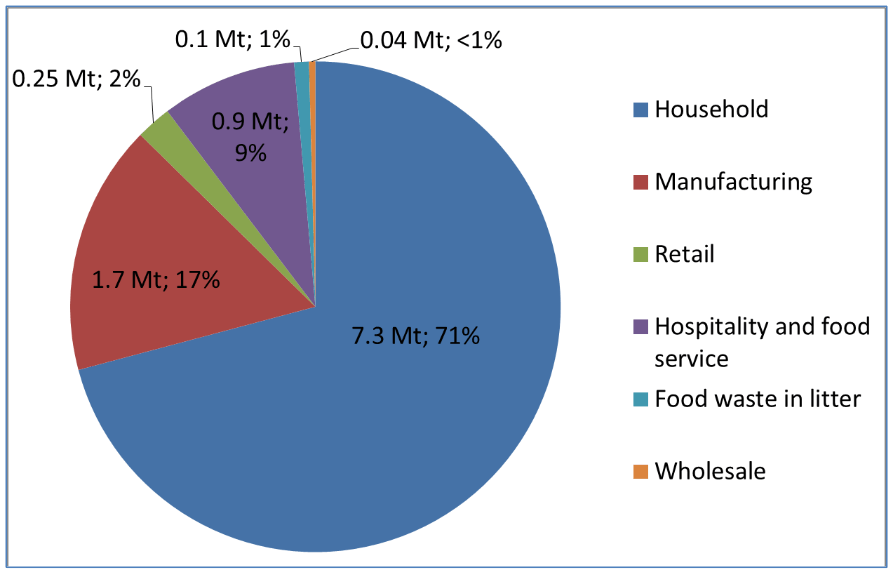
Composting in cities
If you live in a city or town, you may not be creating compost for your own garden, since outside space could be limited or nonexistent – but that doesn’t mean you can’t compost food waste and other suitable materials from your home. As you will learn below, there are plenty of ways to compost indoors. If you don’t have a garden, the main focus of your composting will inevitably be waste reduction.
Food waste from cities and populous areas is a massive problem. Many municipalities have no adequate system to deal with organic waste effectively; food waste often ends up in landfill, where, mixed with other refuse, can be a major problem for the environment.
As an individual, the first and most important step is to reduce the amount of food you consume, and to avoid wasting it.
If such a system is not in place where you live, home composting is, of course, even more important. But even if you have a food waste bin, it may still be a good idea to compost at home. Information on how you might use home-made compost (even without a garden) will be covered in later parts.

Composting in the countryside
If you live in the countryside, or a less built-up area, and have a garden, composting there or at home is something with which you may already be familiar. There may be fewer restrictions in terms of space in a more rural location – but composting in these places can bring other challenges.
Some governments and authorities subsidise waste bins/composting containers, providing them free of charge. Elsewhere, you may be left to fend for yourself; certain local authorities do not provide food waste bins to rural addresses, assuming that locals will already be composting their waste.
If you have a very large garden, the main challenge will be to produce enough biomass to feed a composting system, in order to generate enough compost to go around. But when you garden organically and aim for high biodiversity, this can become easier than you might imagine.
Those living rurally are often lucky enough to be able to become almost entirely self-sufficient in terms of producing fresh fruit and vegetables. But it does take some effort to make the most of the fortunate circumstances in which you find yourself.
The fundamentals of composting
Wherever you are composting, it is important to understand the fundamentals of the process, and of what you are trying to achieve. It’s difficult to get good results if you are working blind, so before we discuss different methods for composting, let’s get back to basics and look at what composting is, and what is required.
A living system
The first thing to remember is that a composting system is a living system. A compost heap or composting container is teeming with micro-organisms, without which the decomposition process would not function so effectively. Composting can also depend on the agency of other living creatures, such as worms.
As with any living creatures, these composting ‘helpers’ have certain requirements. Exactly what conditions support a balanced compost system will depend on the method being used, but if you create the perfect environment for micro-organisms and other helpful creatures, they will arrive, and thrive. This will help you create great quality compost.
Aerobic or anaerobic (with or without oxygen)
Composting can occur in two ways: decomposition with oxygen (aerobic), or without oxygen (anaerobic). When we create compost at home, we are generally aiming for aerobic decomposition, since oxygen is used by aerobic microbes in order to process waste efficiently and effectively.
Anaerobic composting (or digestion) can also effectively break down organic material, but unfortunately does so in a way that can be more harmful to the planet. Aerobic decomposition has just three main by-products: water, heat, and carbon dioxide (the latter of which can be more than made up for with garden planting). Anaerobic decomposition, on the other hand, produces methane, a far more potent greenhouse gas. (This also occurs, on a larger scale, when food waste and other organic matter ends up in landfill.)
Nevertheless, anaerobic digestion can be a solution for large-scale composting, since methane can be harnessed usefully, for example in the creation of biogas. Commercial processes of this kind can also produce digestate – a nutrient-rich slurry for use on farm fields. In areas where home composting is not effective at keeping food waste from landfill sites, such operations could be a valuable alternative.
However, in the context of home composting, aerobic is generally the best option. Making sure that the compost remains oxygenated is key; mixing or turning your compost will ensure the correct conditions, while adding materials in thin layers, and not too much dense matter at once can also help.
The importance of moisture
It is important to make sure compost doesn’t become either too wet or too dry. Without sufficient moisture, microbes will be unable to function.
Problems also arise if compost becomes too soggy. For best results, it may be necessary to water outdoor compost in the summer, and cover it during rainy winters. It is similarly important to understand how to add moisture and remove excess water from the system when composting indoors.

Carbon and nitrogen
Creating good compost involves a basic understanding of the different sorts of material composing it. The materials are usually grouped into two categories: carbon-rich ‘brown’ materials and nitrogen-rich ‘green’ materials. Both types are needed in order to create good quality compost.
Brown materials include:
- Cardboard and untreated paper
- Cotton and other natural fibres
- Straw
- Twigs and bark
- Wood chips and sawdust
- Dead leaves
Green materials include:
- Fruit and vegetable scraps
- Eggshells
- Coffee grounds and plastic-free tea bags
- Green leaves
- Grass clippings
- Weeds (that have not set seed, and which do not regrow from root sections)
- Animal manures
- Seaweed
The ideal ratio between these two types of material will depend on the composting method or methods used. In order to maintain a good mix, add ‘brown’ and ‘green’ materials in thin layers, allowing for the correct conditions for aerobic decomposition, and to ensure the moisture levels. Layering also helps decomposition take place more evenly throughout.
NPK balance
In addition to all of the above, really good compost requires adequate levels of nitrogen, phosphorus, and potassium – the three main nutrients required by plant life. An average homemade compost will have a nitrogen value of 0.5%, 0.27% phosphorus, and 0.81% potassium. By adding a wide range of items to your heap, and making sure its micro-organisms can do their jobs, these three nutrients will remain in balance.
Additionally, an effective composting system should take into account plants’ micronutrient requirements.
However, introducing a wide range of compost ‘ingredients’ should create a balanced mix, leaving little need to worry about the minutiae. While the processes involved in composting, soil health, and plant growth can be complex, actually producing compost is very straightforward.
Look out for Part 2 coming soon, in which we’ll continue the guide to composting with a look at some of the many different composting methods.
Shared and adapted from an original article by Elizabeth Waddington here on the Ethical.net blog.
Ethical.net is a collaborative platform for discovering and sharing ethical alternatives, whether purchasing from a social enterprise, thrift shopping, or learning how to fix your old phone instead of buying a new one. They aim to make ethical the new normal.
The views expressed in our blog are those of the author and not necessarily lowimpact.org's
1 Comment
-
1Grandfather MICHAEL December 13th, 2019
In my experience what puts beginners off are flies, smells, and soggy heaps. Would you mention warmth as well as humidity. Also suggest avoidance of cardboard with coloured inks. I used to keep a stick to use as a poker to monitor temperature for when quantities of grass cuttings are added the temperature goes up unless you turn the mix occasionally. I always cover mine to protect from excessive rain.





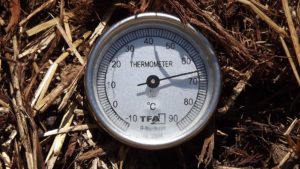 How to get 500 hot showers from your compost heap!
How to get 500 hot showers from your compost heap!
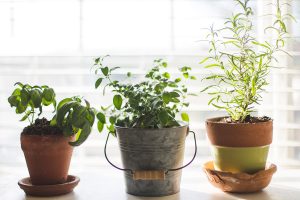 How to start a small garden in your apartment (Part 1)
How to start a small garden in your apartment (Part 1)
 How to start a small garden in your apartment (Part 2)
How to start a small garden in your apartment (Part 2)
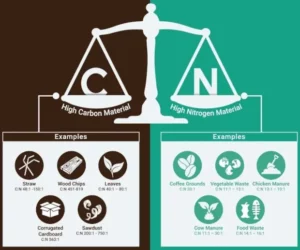 Composting: explaining the carbon-nitrogen ratio
Composting: explaining the carbon-nitrogen ratio
 A guide to composting: methods for composting indoors
A guide to composting: methods for composting indoors
 A guide to composting: methods for composting outdoors
A guide to composting: methods for composting outdoors
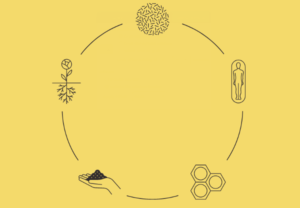 Pushing up the veggies: human composting, coming to an end-of-life facility near you soon
Pushing up the veggies: human composting, coming to an end-of-life facility near you soon
 How to support anaerobic digestion for biogas and compost in communities
How to support anaerobic digestion for biogas and compost in communities
 Bring on the peat ban – no garden should cost the Earth
Bring on the peat ban – no garden should cost the Earth
 20 year research project reveals devastating loss of British and Irish flora
20 year research project reveals devastating loss of British and Irish flora
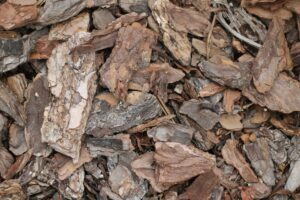 Using compost as mulch
Using compost as mulch
 Composting
Composting
 Soil management
Soil management


